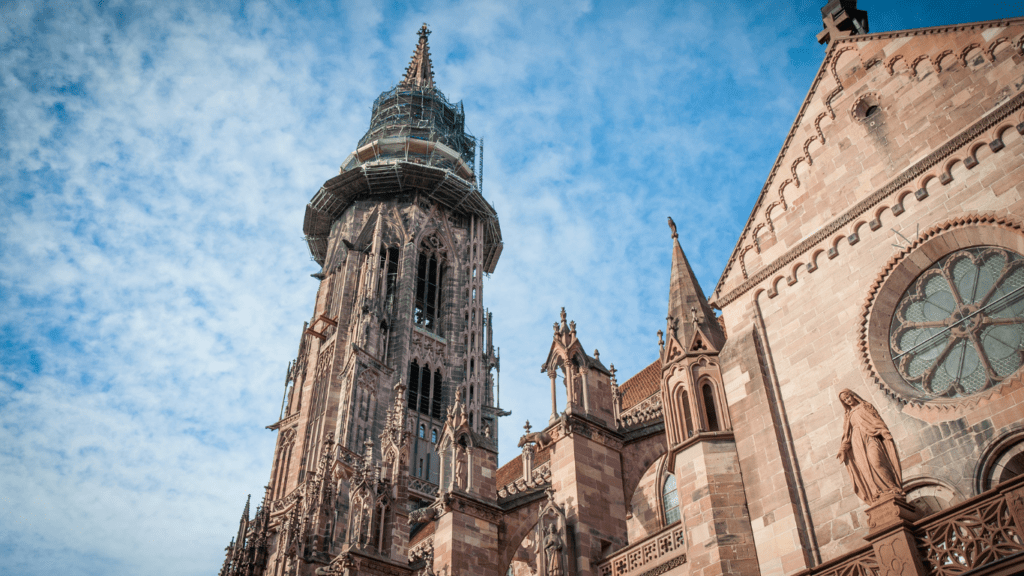Traveling to sacred sites offers a unique opportunity to connect with cultures and traditions that span centuries. I’ve always found that these places are not just about breathtaking views or historical significance; they embody the spiritual essence of the communities that cherish them.
Whether it’s a serene temple in the mountains or an ancient stone circle, each site has its own story and energy. As I embark on these spiritual journeys, I’ve learned the importance of approaching them with respect and reverence.
Understanding the cultural significance and local customs can transform a mere visit into a profound experience. In this article, I’ll share insights on how to honor these sacred spaces while enriching your own spiritual journey. Let’s explore how we can travel mindfully and connect deeply with the world around us.
Understanding Sacred Sites
Sacred sites represent locations imbued with spiritual importance, serving as focal points for cultural practices and beliefs. Recognizing their significance fosters a deeper connection during my travels.
Definition of Sacred Sites
Sacred sites refer to geographical locations deemed holy or revered by specific cultures or religions. These spaces often include temples, shrines, mountains, or other natural landmarks. For instance, the Ganges River in India is considered sacred by Hindus, while the Western Wall in Jerusalem holds deep meaning for Jews.
Each site embodies unique historical and spiritual narratives, making them central to the identity of their communities.
Cultural Significance
Cultural significance encompasses the values, traditions, and rituals associated with sacred sites. These locations often serve as places of worship, community gatherings, and pilgrimage. For example, the ancient city of Machu Picchu in Peru represents Incan heritage and spiritual beliefs.
Engaging with local customs, participating in ceremonies, and respecting practices enhances my understanding of the site’s cultural essence. Being mindful of this significance ensures that my visits support preservation efforts while honoring the traditions of the communities connected to these sites.
Spiritual Journeys
Spiritual journeys offer profound opportunities for personal growth and deeper connections with the world around us. Engaging with sacred sites can lead to meaningful reflections and transformations.
- Personal Transformation: Personal transformation occurs when I immerse myself in the rituals and beliefs surrounding sacred sites. Through meditation and mindful participation in local practices, I experience shifts in perspective.
- Connection to Nature: Connection to nature deepens during visits to sacred sites, where the environment often plays a pivotal role in the spiritual experience. I find that many revered locations feature breathtaking landscapes, such as mountains, rivers, and forests.
Travel Etiquette
Traveling to sacred sites requires mindful behavior and an understanding of local customs. Following proper etiquette not only enhances my experience but also shows respect for the communities that hold these spaces dear.
Respectful Behavior
Practicing respectful behavior is crucial when visiting sacred sites. Observing silence in places of worship, refraining from taking photos when inappropriate, and asking for permission before participating in rituals exemplify consideration.
Engaging with local guides or community members further enriches my understanding of the site’s significance and traditions. Showing appreciation can strengthen connections and demonstrate reverence for the culture.
Proper Attire and Conduct
Adhering to proper attire and conduct reflects respect for sacred environments. Dressing modestly, such as wearing long skirts or trousers and covering shoulders, aligns with the norms of many cultures.
Remaining unobtrusive during ceremonies and refraining from disruptive actions, like loud conversations or inappropriate gestures, maintains the site’s sanctity. Following these guidelines fosters a respectful atmosphere, allowing me to immerse myself fully in the sacred experience.
Notable Sacred Sites Around the World
Many sacred sites serve as touchstones for cultural identity and spiritual exploration. Traveling to these places demands respect and an understanding of their profound significance.
Stonehenge
Located in England, Stonehenge represents an iconic prehistoric monument. This ancient structure consists of massive stone circles, believed to have been constructed around 2500 BC. The site holds immense archaeological significance, connecting visitors to Neolithic traditions.
During the summer solstice, thousands gather to celebrate the sunrise, reflecting its spiritual importance. Respecting the site includes adhering to guidelines that protect its integrity, such as staying on designated paths.
Machu Picchu
Machu Picchu, often dubbed the “Lost City of the Incas,” sits high in the Andes Mountains of Peru. Built in the 15th century, this UNESCO World Heritage site showcases Inca architectural genius and rich cultural history.
The breathtaking views and terraced landscapes invite meditation and introspection. Visitors often engage with local guides to learn about Inca customs and spiritual practices, deepening their connection to the site. Respectful engagement with the surrounding environment preserves its beauty and sanctity.
Varanasi
Varanasi, one of the oldest continually inhabited cities in the world, holds profound significance in Hinduism. Located on the banks of the Ganges River, it draws pilgrims seeking spiritual purification.
The city’s ghats, or riverfront steps, serve as venues for rituals and ceremonies. I’ve witnessed the evening Aarti ceremony, a mesmerizing display of devotion and community spirit. Practicing reverence during visits, such as avoiding loud conversations and maintaining a respectful demeanor, enhances the experience for all who wish to connect with its spirituality.
The Benefits of Visiting Sacred Sites
Visiting sacred sites offers profound benefits, enriching my understanding of diverse cultures and enhancing my spiritual journey. Immersing in these spaces fosters a unique connection to history and community beliefs.
Cultural Awareness
Engaging with sacred sites deepens cultural awareness. I gain insights into local traditions, rituals, and history through participation in their customs. Learning about a site’s significance helps me appreciate the narratives tied to its community.
Respecting local practices, such as attending ceremonies or learning traditional greetings, cultivates a meaningful connection to the people and their values. This effort not only enhances my experience but also promotes the preservation of these important cultural heritages.
Spiritual Growth
Visiting sacred sites facilitates spiritual growth. I often find that these locations serve as powerful environments for reflection and transformation. Engaging in practices such as meditation, prayer, or mindfulness rituals encourages personal introspection and fosters a sense of inner peace.
Surrounded by breathtaking landscapes, I experience a renewed connection to nature and a greater understanding of my place within the world. This transformative journey nurtures my spiritual well-being and connects me to something greater than myself, enriching my life and perspective.



